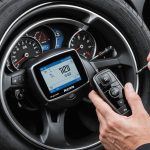Ultimate Handbook: A Comprehensive Step-by-Step Guide to Polishing and Waxing Your UK Car for Paint Protection
Preparing Your Vehicle for Detailing
Before you dive into the world of polishing and waxing, it’s crucial to prepare your vehicle properly. This initial step sets the foundation for a successful detailing process and ensures that your hard work yields the best results.
Choosing the Right Location
When detailing your car, the location is just as important as the tools and products you use. Opt for a shaded area to avoid direct sunlight, which can cause cleaning products to dry too quickly, leaving streaks and residues on your car’s surface. This simple step can save you a lot of trouble in the long run[1].
Also to read : Ultimate guide to revamping your classic uk car”s fuel system: key steps for an effective upgrade
Assembling Your Tools and Products
Gather all your cleaning tools and products in advance. Having everything within reach will streamline the process and save you time. Here’s a list of essential items you’ll need:
- Vacuum Cleaner: A high-powered vacuum for interior cleaning.
- Wash Mitts and Sponges: Soft, non-abrasive materials to avoid damaging the paint.
- Car Shampoo: pH-balanced shampoos safe for all surfaces.
- Clay Bar: For removing embedded contaminants from the paint.
- Polish and Compound: To restore gloss and remove minor imperfections.
- Wax or Sealant: To protect the paintwork from environmental elements.
- Interior Cleaners: Specific cleaners for fabric, leather, and plastic surfaces.
- Microfibre Towels: For drying and buffing the car[1].
Inspecting Your Vehicle
Before starting, inspect your car to identify areas that require extra attention. Look for scratches, stains, or spots that need special care. This inspection will help you tailor your detailing process to address specific issues with your vehicle.
Have you seen this : Ultimate guide to modernizing classic uk cars with adaptive cruise control: a simple step-by-step approach
Step 1: Exterior Cleaning and Decontamination
A thorough exterior clean is the foundation of car detailing. It removes dirt, grime, and contaminants, paving the way for further treatments.
The Two-Bucket Wash Method
Use the two-bucket system: one bucket for soapy water and another for rinsing your wash mitt. This prevents dirt from being reintroduced to the car’s surface, minimizing the risk of scratches. Here’s how to do it:
- Fill one bucket with soapy water and the other with clean water.
- Dip your wash mitt into the soapy water, wring it out thoroughly, and wipe down the car’s surface.
- Rinse the mitt in the clean water bucket before dipping it back into the soapy water to avoid transferring dirt back to the car[1].
Decontaminating with a Clay Bar
After washing, use a clay bar to remove stubborn contaminants like tar, sap, and industrial fallout. Here’s a step-by-step guide:
- Lubricate the surface with a detailing spray.
- Glide the clay bar gently over the surface to lift impurities.
- Repeat the process until the clay bar glides smoothly over the paint, indicating that the surface is clean[1].
Drying the Car
Use a high-quality microfibre towel to dry the car. Pat the surface instead of rubbing to avoid swirl marks.
Step 2: Polishing and Paint Correction
Polishing is the key to restoring your car’s paint to its original shine. Here’s how you can do it effectively:
Choosing the Right Polish
Select a polish based on your car’s condition. Use a mild polish for minor imperfections and a compound for deeper scratches.
- Mild Polish: For minor imperfections such as light scratches and swirl marks.
- Compound: For deeper scratches and more severe imperfections[1].
Applying the Polish
Apply polish using a dual-action polisher or by hand with an applicator pad. Here’s a detailed guide:
- Work in small sections to maintain even coverage.
- Use circular motions to distribute the product evenly.
- Buff off excess with a clean microfibre towel.
- For machine polishing, use a dual-action polisher with a backing plate and a suitable polishing pad. Start with a coarse pad for deeper scratches and move to a finer pad for final polishing[1][4].
Step 3: Paint Correction Techniques
Paint correction involves eliminating various forms of imperfections such as swirl marks, light scratches, and buffer trails.
Understanding Paint Correction
Paint correction is a process that requires patience and the right techniques. Here are some common issues and how to address them:
- Swirl Marks: Caused by improper washing or drying techniques. Use a mild polish and a dual-action polisher to correct.
- Light Scratches: Use a compound and a rotary polisher for deeper scratches.
- Buffer Trails: Result from using a buffer incorrectly. Correct using a fine polish and a dual-action polisher[2][4].
Tools for Paint Correction
Here are the essential tools you’ll need for paint correction:
- Dual-Action Polisher: Ideal for most polishing tasks.
- Rotary Polisher: For more aggressive correction, but requires more skill.
- Polishing Pads: Various grades from coarse to fine.
- Backing Plate: To attach the polishing pad to the polisher.
- Microfibre Towels: For buffing off excess polish[1][4].
Step 4: Protecting the Paintwork
Once the paint is clean and polished, it’s time to protect it with a wax or sealant.
Applying Wax
Wax adds a layer of protection and enhances gloss. Here’s how to apply it:
- Apply in thin, even layers using an applicator pad.
- Allow it to haze over before buffing with a microfibre towel.
- For long-term protection, consider using a paint sealant or ceramic coating[1].
Ceramic Coating vs. Traditional Wax
Ceramic coatings and traditional waxes offer different levels of protection and ease of use.
-
Traditional Wax:
-
Provides good all-round protection.
-
Hydrophobic properties.
-
Available in paste and liquid forms.
-
Less durable than ceramic coatings[3].
-
Ceramic Coating:
-
Uses liquid silicon dioxide (SiO2) polymers.
-
Offers superior durability and UV protection.
-
Highly hydrophobic, making cleaning easier.
-
Can be applied to various exterior materials including paint, alloy wheels, and trim pieces[3][5].
Step 5: Interior Detailing
The interior is where you spend most of your time, so keeping it clean is crucial for comfort and health.
Vacuuming and Cleaning Surfaces
Start by vacuuming carpets, seats, and crevices. Use detailing brushes for hard-to-reach areas. Follow up by wiping down surfaces with appropriate cleaners.
- Fabric Seats: Use a fabric cleaner to remove stains and freshen the material.
- Leather Seats: Use a leather cleaner and conditioner to maintain suppleness and prevent cracking.
- Plastic Surfaces: Use a plastic-specific cleaner to avoid damaging the material[1].
Step 6: Wheels and Tyres
Wheels and tyres often harbour the most dirt, so they require special attention.
Cleaning the Wheels
Use a wheel cleaner and a dedicated brush to remove brake dust and grime. Rinse thoroughly to avoid leaving residues.
Dressing the Tyres
Apply a tyre dressing to restore a rich, black finish and protect against UV damage. This step also adds a polished look to your car[1].
Step 7: Finishing Touches
The finishing touches elevate your detailing job to a professional level.
Cleaning Windows and Mirrors
Use a glass cleaner to achieve streak-free clarity on windows and mirrors. Wipe in a vertical and horizontal pattern to avoid streaks.
Adding a Quick Detailer Spray
A quick detailer spray adds a final layer of gloss and protection, ensuring your car looks flawless. Here’s why it’s useful:
- Quick Gloss: Provides an instant glossy finish.
- Protection: Offers temporary protection against the elements.
- Ease of Use: Simple to apply and buff off[1].
Tips for Maintaining Your Detailed Car
Regular maintenance ensures your hard work lasts longer. Here are some tips:
- Weekly Wash: Wash your car weekly to keep it clean.
- Detailer Sprays: Touch up with detailer sprays between washes.
- Reapply Wax or Sealant: Reapply wax or sealant every few months to maintain protection[1].
Comparative Table: Paint Protection Products
Here’s a comparative table to help you choose the best paint protection product for your car:
| Product | Type | Durability | Ease of Use | Hydrophobic Properties | UV Protection |
|---|---|---|---|---|---|
| Bilt Hamber Double Speed-Wax | Traditional Wax | Medium | Easy | Good | Good[3] |
| Gtechniq C1 Crystal Lacquer | Ceramic Coating | High | Moderate | Excellent | Excellent[3][5] |
| 303 Graphene Nano Spray Coating | Graphene Spray | High | Easy | Excellent | Excellent[3] |
| Autoglym Rapid Aqua Wax Complete Kit | Traditional Wax | Medium | Easy | Good | Good[3] |
| Meguiar’s Hybrid Ceramic Liquid Car Wax | Hybrid Wax | Medium-High | Easy | Good | Good[3] |
Car detailing at home is an engaging and rewarding process that helps maintain your vehicle’s aesthetic and functional appeal. By following this guide and investing in the right tools and techniques, you can achieve professional-quality results from the comfort of your driveway.
As Simoniz notes, “Healthy paintwork really makes a car,” and protecting it is essential for its longevity and appearance. Whether you’re a seasoned enthusiast or a beginner, the satisfaction of seeing your car gleam is unparalleled. Happy detailing!
Additional Tips and Quotes
-
Use the Right Tools: “Using the right tools is crucial. A dual-action polisher is ideal for most polishing tasks, but for more aggressive correction, a rotary polisher might be necessary,” advises RK Car Design[2].
-
Regular Maintenance: “Regular maintenance ensures your hard work lasts longer. Wash your car weekly, touch up with detailer sprays, and reapply wax or sealant every few months,” suggests Killer Brands[1].
-
Ceramic Coating Benefits: “Ceramic coatings offer superior durability and UV protection. They are highly hydrophobic, making cleaning easier and protecting against light scratches,” explains Car Magazine[3].
By following these steps and tips, you’ll be well on your way to achieving a showroom-quality finish for your car. Remember, detailing is not just about cleaning; it’s about protecting and enhancing your vehicle’s appearance for years to come.









